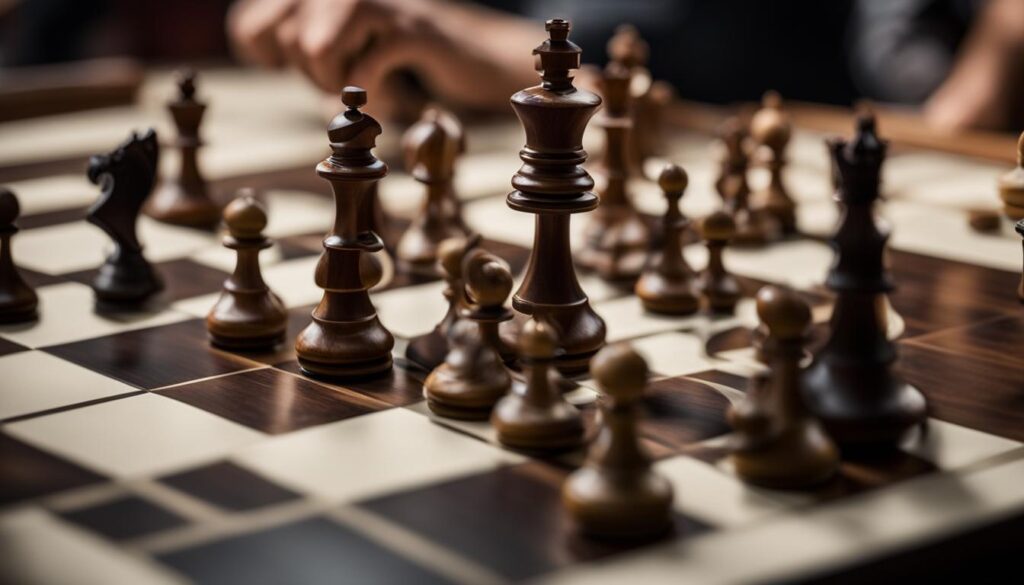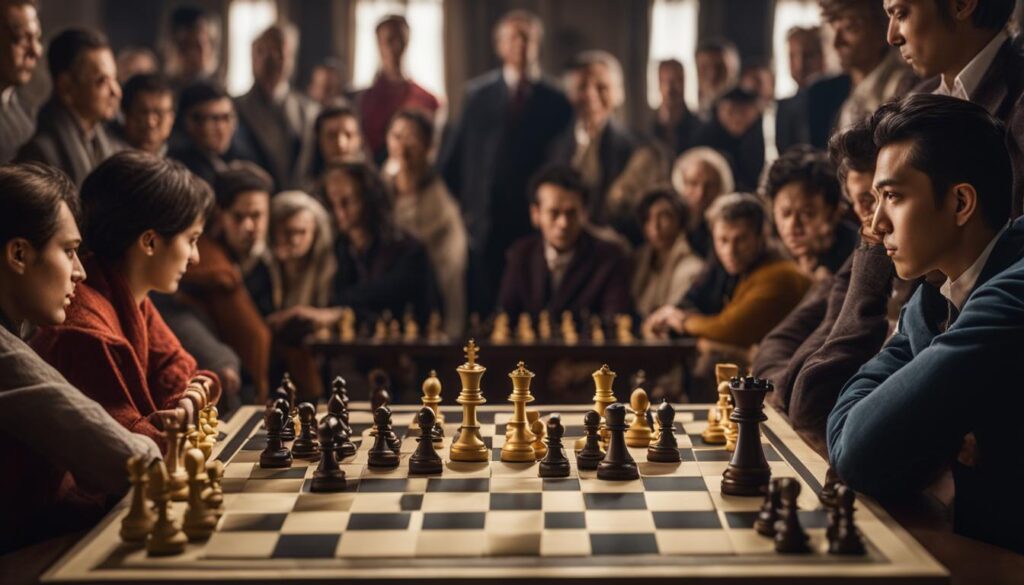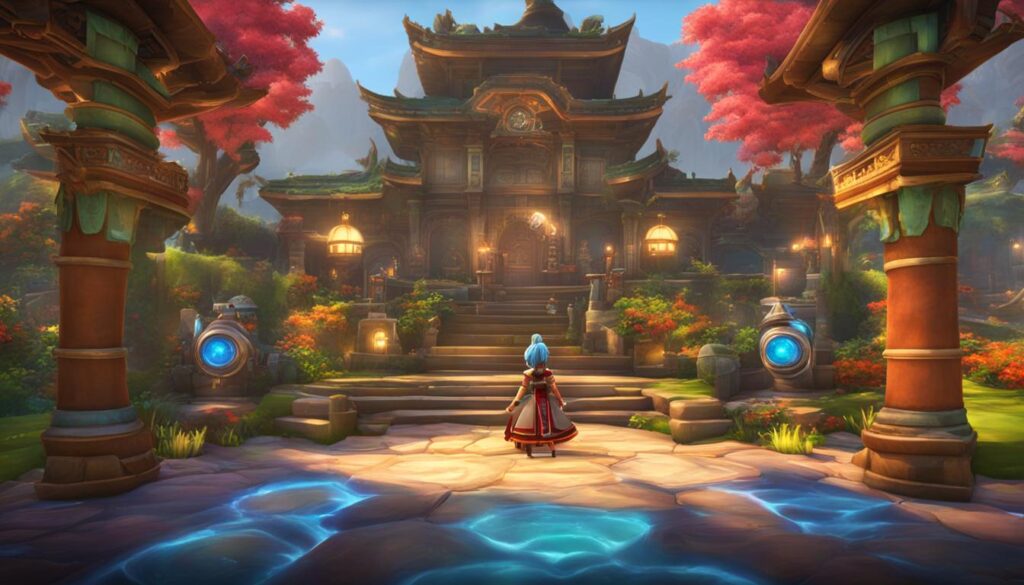We may earn money or products from the companies mentioned in this post.
Chess is a game of strategy, patience, and skill, which has been played for centuries by millions of people globally. Capturing the action, intensity, and emotions of a chess tournament through the lens of a camera can be challenging. However, with the right techniques, equipment, and creativity, you can become a skilled Chess Tournament Photographer.
In this comprehensive guide, we will dive deep into the art of Chess Tournament Photography. From understanding the dynamics of chess tournaments to mastering post-processing techniques, we will take you through every aspect of capturing stunning images of chess tournaments. Read on to discover how to elevate your photography skills to the next level.
Key Takeaways
- Chess Tournament Photography requires a combination of technical knowledge, creativity, and an understanding of the game.
- The right equipment is essential to capture the intensity and emotions of chess tournaments.
- Techniques such as strategic positioning, understanding lighting conditions, and experimentation with angles can help in capturing the perfect shot.
- Composition and framing are crucial in creating visually pleasing images of chess tournaments.
- Post-processing can enhance the overall quality of chess tournament photos.
Understanding Chess Tournaments
Chess tournaments are one of the most fascinating events for a photographer to capture. With intense concentration and high-stakes matches, they offer a world of photographic opportunities. But before you start snapping away, it’s important to understand the mechanics of chess tournaments and the challenges they pose for photographers.
The Structure of Chess Tournaments
Chess tournaments come in various formats, from round-robin to knockout to Swiss-system. The Swiss-system is the most commonly used, where players are paired based on their current standing in the tournament. Rounds are typically played over the course of several days or weeks, with one or two matches per day.
As a photographer, it’s important to be aware of the tournament schedules and make sure you plan your shoots accordingly. With matches often lasting several hours, you’ll need to be patient and strategize your shots carefully.
The Dynamics of Chess Tournaments
While chess is a quiet game, tournaments can be surprisingly noisy affairs. Crowds of spectators gather to watch the matches, with the sounds of shuffling pieces and ticking clocks filling the air. It’s up to the photographer to capture the intensity of the players while also incorporating the sounds and atmosphere of the tournament.
The Unique Challenges of Chess Event Photography
One of the biggest challenges of chess event photography is the lack of movement. With players sitting still for long periods, it can be difficult to capture dynamic images. Additionally, the lighting in tournament rooms can be less than ideal, making it a challenge to achieve the desired exposure and sharpness in your photos.
Another challenge lies in capturing the right moments. Unlike sports such as basketball or soccer, where action and movement are constant, chess has moments of intense concentration followed by periods of silence. As a chess tournament photographer, you’ll need to anticipate and capture these critical moments.
Essential Equipment for Chess Tournament Photography
Being a chess tournament photographer requires specific equipment to capture the intensity and emotions of the game. To capture memorable moments, you’ll need the right tools in your camera bag. Here are the essentials:
| Equipment | Description |
|---|---|
| Camera | A high-quality DSLR or mirrorless camera with fast autofocus and burst mode capabilities is essential for capturing the fast-paced chess matches. |
| Lenses | Prime lenses with wide apertures allow more light in and work perfectly for portraits of players. Zoom lenses are also useful for capturing wider shots of the game. |
| Tripod | A sturdy tripod will help keep your camera stable and allow for longer exposure times. |
| Memory Cards | You’ll need plenty of memory cards to capture the numerous matches and moments throughout the tournament. Consider getting high-capacity cards to avoid running out of space mid-game. |
| Batteries | Bring extra batteries and make sure they are fully charged to avoid missing important moments. |
| Camera Bag | A durable and comfortable camera bag will protect your equipment and make it easy to carry around the tournament. |
Having the right equipment is crucial, but it’s not the only factor that contributes to capturing stunning chess tournament photos. As a chess tournament photographer, you must also be familiar with the game’s dynamics and have a keen eye for detail to capture the emotions and intensity of each match.
Continue reading the guide to learn more about the techniques needed for capturing the perfect shot while capturing chess tournaments.
Techniques for Capturing Chess Tournament Moments
Chess tournaments can be intense and fast-paced, with players moving quickly from one move to the next. As a chess tournament photographer, you need to be prepared to capture those pivotal moments and emotions that can turn a match on its head. Here are some chess photography tips to help you do just that:
1. Anticipate the Action
One of the key chess photography tips is to anticipate the action. Chess players often have a rhythm and routine, and you can use this to your advantage. Pay attention to the players’ body language and expressions to capture moments of tension and concentration. Be ready to snap a photo when a player is about to make a move or react to their opponent’s move.
2. Consider Your Positioning
Positioning is crucial in chess tournament photography. You need to make sure you have a clear line of sight to the board and the players’ faces. Consider your angle and try to get as close to the players as possible without disturbing them. If you are shooting from a distance, consider using a telephoto lens to zoom in on the action.
3. Pay Attention to Lighting
Lighting can have a big impact on the quality of your chess tournament photos. If you are shooting indoors, make sure to adjust your camera settings to compensate for any low-light conditions. If possible, try to position yourself near a window or other natural light source to achieve a more natural look. Avoid using flash unless absolutely necessary, as it can be distracting to the players.
4. Experiment with Depth of Field
Depth of field is an important factor in chess tournament photography. By adjusting your aperture, you can create a shallow depth of field to blur the background and draw attention to the players. Alternatively, you can use a wider aperture to capture a wider depth of field to show the entire scene. Experiment with different settings to see what works best for the shot.
“A great photograph is one that fully expresses what one feels, in the deepest sense, about what is being photographed.” – Ansel Adams
By following these chess photography tips, you can capture unforgettable moments from your next chess tournament. Remember to stay focused and be patient, as sometimes the most memorable shots come from unexpected moments. Good luck!
Composition and Framing in Chess Tournament Photography
The composition and framing of your photographs are critical in capturing the essence and emotions of chess tournaments. By experimenting with different angles, perspectives, and focal points, you can create visually striking images that tell a compelling story.
Angles and Perspectives
As a chess tournament photographer, you have the opportunity to capture the game from a variety of angles and perspectives. Whether you’re shooting from high above the board or crouching low to the ground, each angle can offer a unique and interesting view of the match.
Consider experimenting with different perspectives, such as shooting from behind a player’s shoulder or capturing the board’s reflection in a nearby window. These perspectives can add depth and interest to your photos and provide a fresh perspective on the game.
Focal Points and Depth of Field
By choosing a focal point for your photographs, you can draw the viewer’s attention to a specific area of the image. For example, if you want to highlight a particular player’s intense focus, you might focus on their eyes and blur the background. This technique is known as depth of field and can add drama and visual interest to your photos.
Leading Lines and Symmetry
Leading lines and symmetry can be highly effective techniques in chess tournament photography. The chessboard’s distinct lines and patterns lend themselves well to symmetrical compositions, while leading lines can draw the viewer’s eye into the image and towards the focal point.
Consider incorporating these techniques into your compositions to add visual interest and draw the viewer’s attention to the most critical aspects of the game.
Chess Tournament Image Gallery
For inspiration and examples of these and other composition and framing techniques, check out our chess tournament image gallery. You’ll find a wide range of stunning photos captured by top chess tournament photographers worldwide.
- Symmetry: A black and white image of a chessboard with perfect symmetry, highlighting the precision and balance of the game.
- Leading Lines: A photo of a player’s hand, captured from behind the chessboard, with the diagonal lines of the board leading the viewer’s eye towards the player’s face.
- Depth of Field: An image of two players in deep concentration, with one player’s face in sharp focus and the background blurred, creating a sense of drama and intensity.
Use these examples as a starting point for your own compositions and experiment with your style to capture the unique beauty and intensity of chess tournaments.
Editing and Post-processing for Chess Tournament Photos
Once you’ve captured your chess tournament photos, it’s time to enhance them through post-processing. Whether you’re a beginner or an expert, editing can take your photos to the next level and help you bring out the best in your shots.
Before you start editing, it’s important to make sure that your camera settings were correct when you took the photos. This will minimize the amount of editing needed and preserve the quality of your images.
Basic Editing Techniques
The first step in editing your chess tournament photos is to adjust the exposure, brightness, and contrast. This can be done using the Levels or Curves tool in your photo editing software. You can also adjust the White Balance to correct any color cast issues.
Once you’ve adjusted the basic settings, you can move on to more advanced techniques such as removing blemishes or distractions, selecting specific parts of the photo to edit, and creating a more dramatic effect through cropping or vignetting.
Preserving Quality
When editing your chess tournament photos, it’s important to preserve their quality. Make sure to always work with a copy of the original image and avoid overediting. You can also use the Sharpening tool to enhance the details in your photo.
Finally, make sure to save your edited photos in the appropriate format, such as JPEG or TIFF. This will ensure that your photos can be easily shared and viewed without losing quality.
Conclusion
Chess Tournament Photography is not just about clicking pictures of the event; it’s about capturing the essence of the game and its players while creating visually appealing images. Throughout this guide, we’ve taken you through the fundamental aspects of chess tournament photography and provided you with the necessary knowledge to take your photography skills to the next level.
Remember, to be successful in chess tournament photography, you need to be equipped with the right gear, have a deep understanding of the game, be willing to experiment with different composition techniques and post-process your images to enhance their appeal.
Mastering the Art of Chess Tournament Photography
Mastering the art of chess tournament photography can take time, but with patience and persistence, you’ll be able to capture spectacular images that will tell compelling visual stories for years to come. To become a successful chess tournament photographer, you need to be passionate and dedicated to the craft and open to learning from your experiences.
Take inspiration from some of the world’s top chess tournament photographers and always be on the lookout for new techniques and strategies that can help you improve your photography.
The Importance of Capturing Moments
In chess tournament photography, it’s essential to capture the moments that matter. Whether it’s an intense match or a player’s emotional reaction, these moments are what make the game so compelling and memorable. By mastering the techniques and strategies that we’ve discussed in this guide, you’ll be well-equipped to capture these moments and create beautiful images that tell the story of the game.
So, grab your camera, head out to your next chess tournament, and start telling visual stories that will capture the essence of the game and the players who play it.
FAQ
What is Chess Tournament Photography?
Chess Tournament Photography is the practice of capturing images of chess tournaments, including the players, the atmosphere, and the intense moments of the game.
What equipment do I need for Chess Tournament Photography?
To capture stunning images of chess tournaments, you will need a DSLR or mirrorless camera, a variety of lenses (such as a wide-angle lens for capturing the overall scene and a telephoto lens for close-ups), a sturdy tripod, and sufficient memory cards.
Are there any specific photography techniques for capturing chess tournaments?
Yes, there are specific techniques that can help you capture the action and emotions of chess tournaments. These techniques include understanding lighting conditions, strategically positioning yourself to capture key moments, and anticipating actions before they happen.
How can I edit my chess tournament photos to make them look even better?
Editing and post-processing can enhance the colors, adjust exposure, and retouch the images to create stunning final results. You can use photo editing software like Adobe Lightroom or Photoshop to make these adjustments.
What are some composition tips for chess tournament photography?
In chess tournament photography, composition plays an important role. Experiment with different angles, perspectives, and focal points to create visually pleasing images. Pay attention to the placement of the chessboards and the players to create a balanced composition.
How can I improve my skills in Chess Tournament Photography?
Improving your skills in Chess Tournament Photography requires practice, experimentation, and continuous learning. Attend as many chess tournaments as possible, study the work of experienced chess tournament photographers, and seek feedback on your own images to refine your techniques.
Can I sell my chess tournament photos?
Selling chess tournament photos is possible, but it may require obtaining permission from the organizers and the players involved. It is important to understand the legal and ethical considerations surrounding the commercial use of your images.
Are there any specific challenges in Chess Tournament Photography?
Yes, Chess Tournament Photography comes with its own set of challenges. These can include dealing with low light conditions, capturing fast-paced action, maintaining a respectful distance from the players, and finding creative ways to capture the intensity and concentration of the game.
How can I get started in Chess Tournament Photography?
To get started in Chess Tournament Photography, familiarize yourself with the rules and dynamics of chess tournaments. Invest in the necessary equipment, practice photographing chess games, attend local tournaments, and seek opportunities to showcase your work in chess-related publications or exhibitions.
Affiliate Disclosure: This post may contain affiliate links. If you purchase through our link, we may receive a small commission, but at no additional cost to you. For more information, please see our Disclosure statement.



